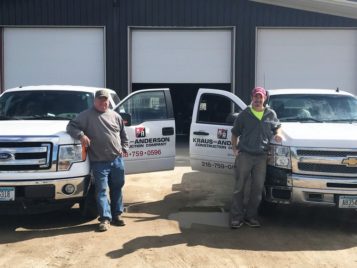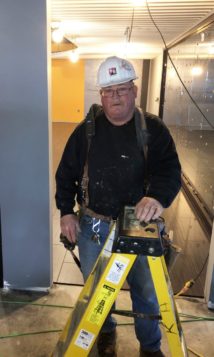Dipping into retirement pool to fill worker shortage gap
By Mary Kaeding

Construction companies around the country always need to manage their project schedules around seasonal weather conditions, during the school year and sometimes over extended holiday periods. For example, crews will find the arctic blast in the north quite challenging to complete certain outdoor projects, so work is assigned accordingly. Similarly, major educational construction may not be feasible while schools are in session, so work is scheduled during the summertime.
So how do construction companies – especially when there are labor shortages – find and hire seasoned workers for seasonal work?
“It just might be a bit too early for some retirees to put that proverbial gold watch on their wrists,” says Brian Hook, Kraus-Anderson Construction’s director of field operations, whose company again will welcome the return of retired superintendents to help with projects that will need all hands on deck during the busiest time of the construction year.
Many construction firms perform their work in climates where short summers provide optimum construction weather. Therefore, summertime is exponentially critical in many K-12 construction practices – when school’s out – creating a busy and narrow window of opportunity that opens during summer break.
Because of this exceptional seasonal demand, former superintendents are a valuable asset and play an important role even after they’ve officially retired.
Hook suggests reaching out to some retired employees who have a lot of time under their belts and perhaps on their hands. For example, after 12 months of retirement, union carpenters can work up to 600 hours in one year’s time without affecting their pensions.

“And when we bring back retired superintendents, we have proven leaders that can run a portion of a job or a small project effectively, giving us flexibility in placing full-time superintendents,” said Hook. “We can tap into their experience and craft knowledge one more time.”
While many construction companies perform big jobs, a significant part of their summer school work likely includes smaller-scale improvements, such as restroom upgrades or classroom additions. Crews can work in various areas and phases throughout the facility and the school campus and, in many cases, in multiple facilities for a school district.
This work also includes deferred maintenance, such as roof replacements, security upgrades, mechanical upgrades and site improvements such as new bus loops, parking, athletic fields, as well as classroom and commons area reconfiguration and optimization.
In addition, many schools still have inefficient steam boilers that need mechanical upgrades, including hot water hydronic boilers. Other popular upgrades include installation of new LED lighting and card access systems.
In other words, the summer demands for extra help are extraordinary, and retired superintendents can fill that gap.
While some programs and procedures have changed and will require minimal training, most of the superintendents that return are out only a year or two and still up to speed on most new technical requirements.
“It’s great to come back for a period of time to work with the KA crews and the camaraderie that comes with it,” said Dan Wavrin, one of several retired superintendents returning in 2019. “While I enjoy retirement, I also feel like I’ve still got a lot of gas in the tank. Plus it’s good to know my expertise and experience are valued.”
Hiring superintendents for just a few key months when the work load is at its peak is a huge advantage.
Bringing back retired superintendents is a win-win for the company, the client, the retiree and the protégés they mentor. Their experience and leadership are valued on the job and by their crews, and their availability allows for flexibility in providing expertise when and where it is needed, which in turn helps maintain a fuller employment schedule for our other superintendents.
“Instead of retirement, we all look at it as ‘re-wirement,’” added Hook.
Mary Kaeding is manager, marketing communication with Kraus Anderson. She can be reached at mary.kaeding@krausanderson.com.
Worker Shortage Facts + Figures
- 78% of survey respondents report they are having a hard time filling salaried and hourly craft positions.
- 42% of firms expect it will continue to be hard to hire in the next 12 months and 26% expect it will become harder to hire in the next 12 months.
- 30% of survey respondents chose worker shortages as the foremost concern of contractors this year.
- The most frequently mentioned challenge, listed by 43% of survey respondents, is inexperienced skilled labor/workforce shortage.
~ AGC of America The 2019 Construction Hiring and Business Outlook



 Join our thriving community of 70,000+ superintendents and trade professionals on LinkedIn!
Join our thriving community of 70,000+ superintendents and trade professionals on LinkedIn! Search our job board for your next opportunity, or post an opening within your company.
Search our job board for your next opportunity, or post an opening within your company. Subscribe to our monthly
Construction Superintendent eNewsletter and stay current.
Subscribe to our monthly
Construction Superintendent eNewsletter and stay current.